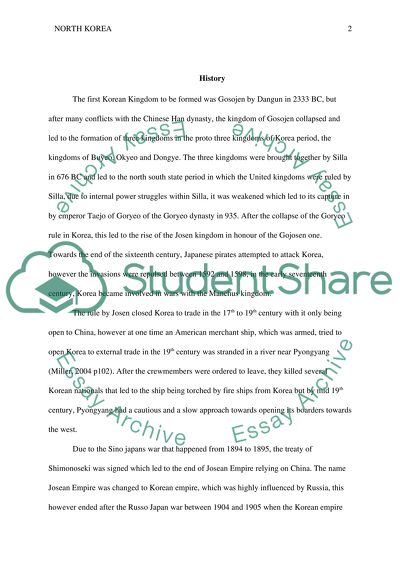Cite this document
(“North Korea Essay Example | Topics and Well Written Essays - 4500 words”, n.d.)
Retrieved from https://studentshare.org/history/1481717-north-korea
Retrieved from https://studentshare.org/history/1481717-north-korea
(North Korea Essay Example | Topics and Well Written Essays - 4500 Words)
https://studentshare.org/history/1481717-north-korea.
https://studentshare.org/history/1481717-north-korea.
“North Korea Essay Example | Topics and Well Written Essays - 4500 Words”, n.d. https://studentshare.org/history/1481717-north-korea.


